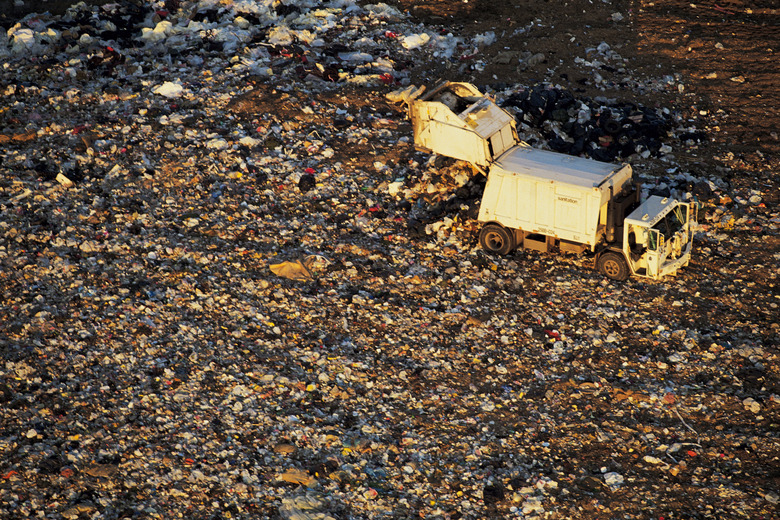How Long Is The Average Landfill Open?
Most of the trash you produce will end up in a municipal solid waste landfill, which accept industrial and commercial debris as well as household waste. The more spacious the municipal solid waste landfill, the longer its life expectancy. Projecting exactly how long a landfill will last is difficult because you never know the exact amount of trash the populace will produce. The more people recycle, however, the longer current landfills can stay in operation.
Landfill Examples
The largest landfill in the United States, Puente Hills Landfill in Los Angeles, has been open since 1957 and is still accepting new trash more than 56 years later. In San Diego, another large urban center, the West Miramar landfill has been open since 1983 and is expected to operate until 2019, a total of 36 years. For large landfills in less populated areas, the South Carolina Office of Solid Waste Reduction and Recycling estimates they have a life expectancy between 30 and 50 years.
Weight Limits
Weight is the number-one factor in how long a landfill stays open. Landfills are given a maximum weight limit each year. Each truck that comes to the landfill also can only carry an average of 12 to 14 tons — trash from 800 to 850 houses. Two hundred trucks might come to a municipal landfill each day, delivering trash from more than 160,000 houses — that's 2,800 tons of trash.
Trash Compacting
In order to fit as many years of trash into one place as possible, landfills compact the trash once garbage trucks deliver it. Compactors are tractors that weigh about 100,000 pounds and have spikes on the wheels. Once the trash is compacted, each cubic yard of trash stores about 1,200 to 1,400 pounds.
After a Landfill Closes
Landfill owners can't simply walk away after a landfill stops accepting new trash. The Environmental Protection Agency requires that all U.S. municipal solid waste landfills be covered with at least 24 inches of earthen material, six of which can sustain the growth of plants. In South Carolina, and other states, landfills are monitored for another 30 years after they close. Monitoring includes repairing erosion, testing the groundwater and making sure no trees are growing — the roots could pierce the liner separating the garbage from the soil.
References
- Environmental Protection Agency: Closure and Post-Closure Care Requirements for Municipal Solid Waste Landfills
- San Diego Environmental Services Department: Miramar Landfill
- San Diego Environmental Services Department: Frequently Asked Questions
- CNN: Trash City: Inside America's Largest Landfill Site
- Environmental Protection Agency: Landfills
Cite This Article
MLA
MacGregor, Kelly. "How Long Is The Average Landfill Open?" sciencing.com, https://www.sciencing.com/long-average-landfill-open-7103/. 24 April 2017.
APA
MacGregor, Kelly. (2017, April 24). How Long Is The Average Landfill Open?. sciencing.com. Retrieved from https://www.sciencing.com/long-average-landfill-open-7103/
Chicago
MacGregor, Kelly. How Long Is The Average Landfill Open? last modified March 24, 2022. https://www.sciencing.com/long-average-landfill-open-7103/
